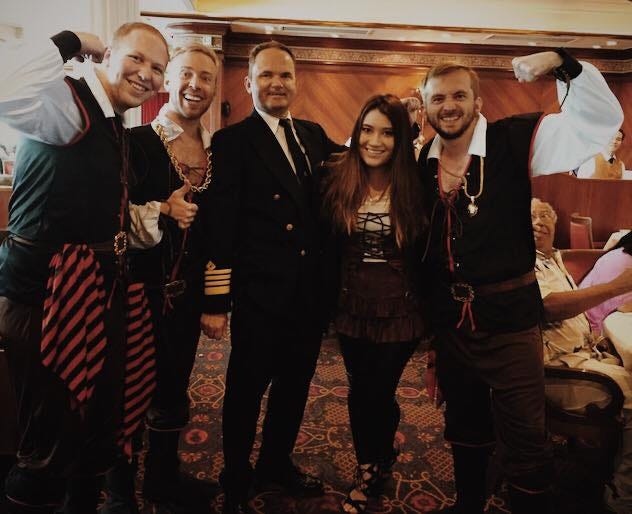One-to-Many Communication Strategies and the Untapped Power of Your Fringe Network
With your ever-growing network, anything is possible...IF you stay connected.
Every month, thousands of subscribers around the world (including me) get an email from serial entrepreneur, investor, and all-around quirky life-lover Nick Gray.
His “Friends” newsletter shares random internet links of new apps to check out and funny articles to read, plus Nick’s latest shenanigans.
One month, Nick wrote about his morning routine of ab exercises, alternating between green tea and bone broth, microwavable eggs, cryotherapy, and checking email before he gets to work.
Another, Nick shares why he bought a Tesla Model Y after 15 years without owning a car, or a case study he wrote about a company making $31M annually selling commercial ice machines.
While Nick and I are friends “in real life”, admittedly it’s difficult to stay in touch with him and other “super-connectors” in my network as often as I’d like.
Through Nick’s newsletter, I can generally keep tabs on what he’s working on, where he’s traveling, and what hobbies he’s trying out.
He also stays top-of-mind, so that when I’m writing books like How To Build A World-Class Network In Record Time or travel to his city, Nick comes to mind.

Class, your takeaway for today is that…
We underestimate the power of our fringe network.
These are the people we meet at a conference once, or invite to a dinner party, online event, or social media community but don’t speak with often.
I can't tell you how many times I've gone to Facebook, LinkedIn, or my email list and asked for a connection to everything from a new fulfillment company for my self-published books to couches I could crash on while backpacking Western Europe in my teens (and everything in between).
You’d be surprised at how effective a diverse fringe network can be in solving your problems because you’re able to tap into the extended networks, brain power, and generosity of thousands of people all at once.
Much of my new book How To Build A World-Class Network In Record Time is designed to assist you in building deep, meaningful relationships with the couple hundred individuals who, at any given time, can best support you in reaching your personal and professional goals.
However, you want to make sure you are keeping in touch with your fringe network because you never know who's going to have the type of introduction or resource you need. Keeping in touch with a wide variety of people gives you options when solving whatever challenge you're faced with.
In fact, we all have power now that only governments, corporations, and the uber-wealthy had just a few generations prior.
Look no further than the work young people like Malala Yousafzai, Greta Thunberg, and Amanda Gorman have accomplished without the benefits of robust family connections, wealth, or decades of life experience with which to build traditional markers of social proof like doctoral degrees or extensive bodies of work.
When these leading voices need help, they ask their fringe network for introductions to members of the media, signatures on a pressing piece of legislation, or help sharing their work with more people.
Think about all the untapped potential in your fringe network.
Now think back to your Vivid Vision if you’ve completed one (if not, watch the video below and use THIS template to follow along, then come back to the rest of this post).
With your ever-growing network, anything is possible.

Nurturing your fringe network is possible through effective one-to-many networking.
Like Nick Grey’s “Friends” newsletter, there are a lot of ways to establish effective one-to-many networking.
In Atlanta, for example, I hosted weekly dinners and social outings before the pandemic (and plan to continue these gatherings when it’s safe to do so).
Sometimes, our group of entrepreneurs from diverse backgrounds gathered at the local park and brought their own food and drinks to enjoy. Other evenings, we’ve played Cards Against Humanity at someone’s home, and when I lived in New York City I even hosted a dodgeball game at a park overlooking the Statue of Liberty.
Rather than setting aside time for lots of individual coffee or lunch meetings during any given week, I set one time and invite multiple people to come together and hang out.
Everyone had the change to meet one another and the network effect of these gatherings provided more value than individual meetings could. Plus, one-to-many networking can be fun when done properly!
Some of my favorite one-to-many networking strategies are:
Building an email list where you share valuable ideas every week, month, or quarter. Some of the world’s top thought leaders have done this as a way to keep in touch with their fringe network, which encompasses their readers or followers, while also creating a predictable and scalable marketing channel for their businesses.
Starting a podcast which potentially gives you another tool to meet influential people and deepen relationships with super-connectors in your network while broadcasting your conversation to your fringe network.
Creating online communities through Facebook, Clubhouse, Reddit, or elsewhere, where dozens, hundreds, and even thousands of people can connect asynchronously and post to the group at large while exploring their own individual connections around common interests.
Hosting a regular dinner party series and/or organizing social outings where you’re cultivating unique shared experiences for yourself and others.
Building products or entire companies, whether it’s a book, online course, or mastermind group like Meeting of the Minds where you’re financially incentivizing yourself (and your team) to keep in touch with your fringe network.
Anything that saves you time, allows you to offer value to multiple people at once, and helps you stay top-of-mind is a winning strategy.
Plus, you shouldn’t feel compelled to build multiple one-to-many networking functions all at once.
In fact, it is counterproductive to start a new podcast, online community, or email list, only to discontinue your efforts a few weeks or months into your journey.
If you want an easy place to start, reconsider how you’re using social media today.
Today, social media platforms allow us to stay connected with a lot of people, giving us the ability to catalyze great change through our fringe networks.
Social media doubles as a broadcasting channel whenever you need some help.
You likely post every so often on Facebook, Twitter, Instagram, LinkedIn, etc.
Are you posting interesting content that provides value to your network?
Are you adding friends, connections, and followers who will enrich your professional network and who you’ve actually spoken to previously, or are you diluting the quality of your fringe network by allowing anyone and everyone to connect with you, even if you don’t know them, making it harder to use the “Friends”, “Connections”, or “Followers” functions to easily search your fringe network and remind yourself of potential resources when you need them most?
Are you providing updates related to your top relationship-building goals and making occasional “asks” of your fringe network so other people can help you?
Social media keeps you top of mind for all the individuals that you meet over time, so that they can come to you and hire, help, or promote you when they need to tap into your Zone of Genius.
And with technology, it's easier than ever to effectively manage that fringe network, through native directories like the “Friends” list on Facebook or “Connections” function on LinkedIn, as well as CRM systems, email reminder tools baked into products like MixMax, and more.
All you have to do is stay connected.
REPLY AND LET ME KNOW! - How are you actively investing in one-to-many networking strategies? What’s going well for you, and where do you need help?
The above is material from my upcoming book How To Build A World-Class Network In Record Time, so any feedback is appreciated before we publish the first edition of the book. Plus, I’m always happy to help with whatever you’ve got going on :).
Cheers,
-Jared
Last year, we published over a dozen step-by-step guides, webinars, and exclusive interviews for paying subscribers only.
We save our best ideas, content, and recordings for premium subscribers, so if you want more, consider signing up for our premium newsletter so you can read:
How to Create an Ideal Client Profile (which includes a 40 minute training video)
19 Ways To HOST Better Zoom Meetings, Conferences, and Webinars
How To Generate More Predictable Revenue and Increase Profitability
…plus new premium-subscriber only emails every Friday!
Click below to upgrade your membership and continue reading below.
If you become a premium newsletter subscriber, you’ll also get a free copy of my new book How To Build A World-Class Network In Record Time plus over $400 in bonuses! :)
Jared Kleinert is the founder of Meeting of the Minds (motm.co), as well as a TED speaker, 2x award-winning author, and USA Today's "Most Connected Millennial".
Meeting of the Minds curates "super-connectors" and subject matter experts as invite-only attendees to 3 day summits in places like Napa Valley, Bermuda, and elsewhere, as well as “deep dives” such as this Marketing and Biz Dev strategy & implementation workshop. Members of the MOTM network include CEOs of 7, 8, and 9-figure businesses, creators of globally-recognized brands and social movements, New York Times bestselling authors, founders of pre-IPO tech unicorns, c-suite execs from Fortune 500 companies, and others.
Jared's career began at 15 years old when he started his first company, and took off at 16 while working as the first intern, and then one of the first 10 employees, for an enterprise SaaS company called 15Five, which today has raised over $40M and has almost 2000 forward-thinking companies as monthly recurring clients.
Later, Jared would become a delegate to President Obama's 2013 Global Entrepreneurship Summit in Malaysia, write multiple books including the "#1 Entrepreneurship Book of 2015", and speak at TED@IBM the day before he turned 20.
As a highly-sought after keynote speaker and consultant, Jared’s clients range from organizations like Facebook, Samsung, Bacardi, Estee Lauder, IBM, Cornell, Berkeley, AdAge, and the National Speakers Association. His insights on entrepreneurship, networking, marketing, and business development have been featured in Forbes, TIME, Harvard Business Review, Fortune, NPR, Entrepreneur, Mashable, Fox Business and more.
Don’t forget to share! :)



